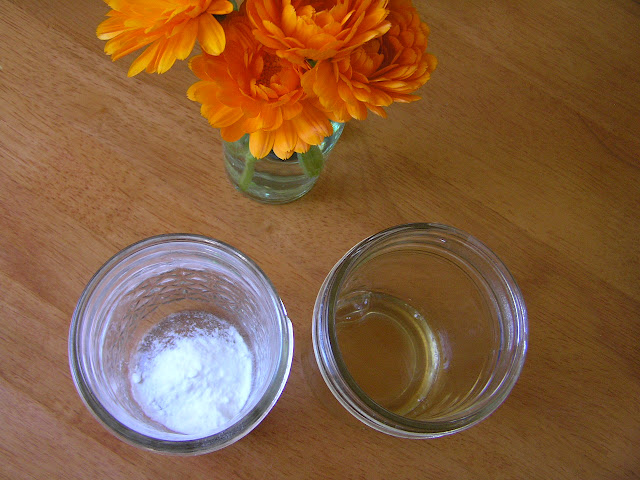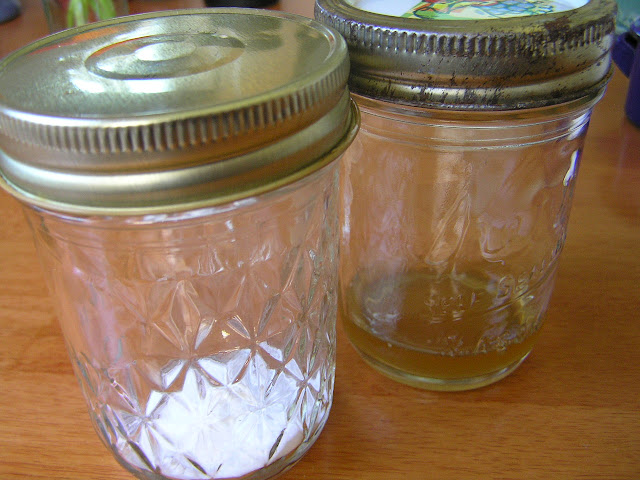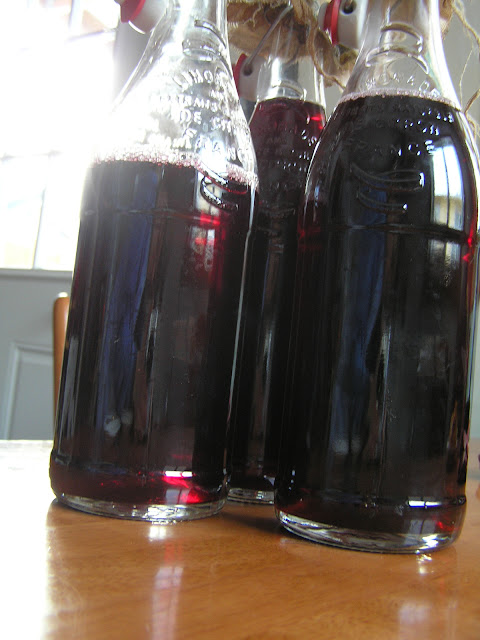Eat the Peel
We've all heard that there's more vitamins in the skin of an apple than in the rest of the fruit; I think that's pretty much true for all fruits and veggies. The same beneficial phytochemicals that protect plants from disease also protect our bodies, and it makes sense for the plants to concentrate their protective chemicals in their skins. Why throw all this away?
Fruit and vegetable skins are often peeled and tossed, avoided as unsavory because of their tougher texture and more bitter flavor. What is that bitter taste from? Probably all those nutrients. The plant
has to protect itself as it's growing, so it puts a god deal of
antioxidants on the surface; these same antioxidants are what keep us
healthy.
I personally have never noticed whether a peeled carrot is sweeter than a whole carrot. If you want a sweet carrot, buy local, fresh produce, and don't bother peeling them. Freshly grown produce that hasn't been shipped across the country, or the world, has amazing flavor, with nutrients as well as water content intact, making it crisp and delicious. In the same way that whole grains are better for you than something stripped down to only starches, I think fruits are better for you in their whole form than stripped down to only the sweet bits. In our family, anything we can eat whole, we do.
Why waste time peeling potatoes? Boil and mash up
the skins too, you can handle it. Or, just chop your potatoes and add them to soups, skins and all. This is way easier and more nutrient
dense than doing all that tedious peeling! What a timesaver to never have to peel a carrot, apple, or potato. Seriously, apple pies will still turn out delicious with the peels in there.
There's quite an array of fruits and vegetables that have an edible peel, and it's surprising how many of these commonly get stripped before consumption. Peaches, nectarines, carrots, potatoes, squash, kiwis, apples, cucumbers, and zucchinis... Sure, the peels add a bit of texture that might be weird at first, but chances are, if you're not a toddler, you can handle eating an apple with the skin on.
For kiwis, the fuzz can be a bit much. We wash them under running water, rubbing some of the fuzz away and then drying them on a towel, which removes most of the tiny hairs. Slice whole, ripe kiwis up, removing the nubby ends, and enjoy! We do still peel kiwis for the kids, who, after all, have more delicate palates than we do. Peaches and apricots are fuzzy also, but in a much less distracting, and more kid-friendly, way. I think the peach fuzz is part of the experience of enjoying a peach!
We recently discovered that mandarin oranges are edible in their entirety! Nik and I were very excited to be able to eat the whole orange. The skins have quite a tart taste, but they're still enjoyable if you eat them along with the sweet fruits. My kids have not come around to liking mandarins with peels, but our bunnies will devour any peels the kids leave!
Most oranges do not have such palatable peels. Mandarins are unusually mild and sweet; they don't produce the same strong oils as other types of oranges. Other varieties of orange peels are quite bitter, but can at least be used in teas.
If you're eating the peel of anything, one caveat is to make sure you're eating organic. That is, after all, where the bulk of pesticides and junk will reside if your produce has been sprayed. If you are eating sprayed fruits or veggies, wash very well, or peel if you must. Peels are porous, though, so sprayed fruit will not be completely free of pesticides even after peeling. Eat organic, local food whenever you can.
Also, I should add that while I've heard of people who love to eat mangoes with the peel, I am allergic to an enzyme, urushiol, which is present in mango peels. Urushiol is the same enzyme that enables poison ivy and poison oak to give people contact rashes. For years I actually avoided eating mangoes because I didn't want to risk the blistering rash contact with the skin gave me. However, I've learned that if I carefully peel them, I can still enjoy the fruit. I can touch the peel with my hands, just not with my mouth. Not everyone is allergic to urushiol, but if you have ever had a rash from poison ivy or oak, you should avoid eating mango skins.
We still peel bananas, since they seem super bitter. If you can eat banana peels somehow, please let me know! Some peels just are horrid, like avocado skins. I'm not encouraging you to eat anything disgusting, after all ;) Trust your gut, but don't be afraid to try new, whole foods!
Below are Amazon Affiliate Ads. Any purchase made through them helps support our family. Thanks in advance!
 |
| There's no need to toss any part of this beautiful carrot! |
I personally have never noticed whether a peeled carrot is sweeter than a whole carrot. If you want a sweet carrot, buy local, fresh produce, and don't bother peeling them. Freshly grown produce that hasn't been shipped across the country, or the world, has amazing flavor, with nutrients as well as water content intact, making it crisp and delicious. In the same way that whole grains are better for you than something stripped down to only starches, I think fruits are better for you in their whole form than stripped down to only the sweet bits. In our family, anything we can eat whole, we do.
 |
| The peels of potatoes help to make them a balanced food. Why waste them? The eyes do need to be cut out if the potato is sprouting, though, because the sprouts are mildly toxic. |
There's quite an array of fruits and vegetables that have an edible peel, and it's surprising how many of these commonly get stripped before consumption. Peaches, nectarines, carrots, potatoes, squash, kiwis, apples, cucumbers, and zucchinis... Sure, the peels add a bit of texture that might be weird at first, but chances are, if you're not a toddler, you can handle eating an apple with the skin on.
 |
| The fuzz won't kill you. |
 |
| Yes, you can even eat mandarin orange peels! |
Most oranges do not have such palatable peels. Mandarins are unusually mild and sweet; they don't produce the same strong oils as other types of oranges. Other varieties of orange peels are quite bitter, but can at least be used in teas.
If you're eating the peel of anything, one caveat is to make sure you're eating organic. That is, after all, where the bulk of pesticides and junk will reside if your produce has been sprayed. If you are eating sprayed fruits or veggies, wash very well, or peel if you must. Peels are porous, though, so sprayed fruit will not be completely free of pesticides even after peeling. Eat organic, local food whenever you can.
Also, I should add that while I've heard of people who love to eat mangoes with the peel, I am allergic to an enzyme, urushiol, which is present in mango peels. Urushiol is the same enzyme that enables poison ivy and poison oak to give people contact rashes. For years I actually avoided eating mangoes because I didn't want to risk the blistering rash contact with the skin gave me. However, I've learned that if I carefully peel them, I can still enjoy the fruit. I can touch the peel with my hands, just not with my mouth. Not everyone is allergic to urushiol, but if you have ever had a rash from poison ivy or oak, you should avoid eating mango skins.
We still peel bananas, since they seem super bitter. If you can eat banana peels somehow, please let me know! Some peels just are horrid, like avocado skins. I'm not encouraging you to eat anything disgusting, after all ;) Trust your gut, but don't be afraid to try new, whole foods!
Below are Amazon Affiliate Ads. Any purchase made through them helps support our family. Thanks in advance!




































